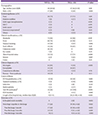1. Grahn A, Studahl M. Varicella-zoster virus infections of the central nervous system – prognosis, diagnostics and treatment. J Infect. 2015; 71:281–293.

2. Lee JE, Lee S, Kim KH, Jang HR, Park YJ, Kang JS, Han SY, Lee SH. A case of transverse myelitis caused by varicella zoster virus in an immunocompetent older patient. Infect Chemother. 2016; 48:334–337.

3. Ihekwaba UK, Kudesia G, McKendrick MW. Clinical features of viral meningitis in adults: significant differences in cerebrospinal fluid findings among herpes simplex virus, varicella zoster virus, and enterovirus infections. Clin Infect Dis. 2008; 47:783–789.

4. Glaser CA, Gilliam S, Schnurr D, Forghani B, Honarmand S, Khetsuriani N, Fischer M, Cossen CK, Anderson LJ. California Encephalitis Project, 1998-2000. In search of encephalitis etiologies: diagnostic challenges in the California Encephalitis Project, 1998-2000. Clin Infect Dis. 2003; 36:731–742.

5. Persson A, Bergström T, Lindh M, Namvar L, Studahl M. Varicella-zoster virus CNS disease--viral load, clinical manifestations and sequels. J Clin Virol. 2009; 46:249–253.

6. Kim SH, Cho OH, Park SJ, Lee EM, Kim MN, Lee SO, Choi SH, Kim YS, Woo JH, Lee SA, Kang JK. Rapid diagnosis of tuberculous meningitis by T cell-based assays on peripheral blood and cerebrospinal fluid mononuclear cells. Clin Infect Dis. 2010; 50:1349–1358.

7. Lee YM, Kim SM, Park SJ, Park KH, Lee SO, Choi SH, Kim YS, Woo JH, Kim SH. Indeterminate T-SPOT.
TB test results in patients with suspected extrapulmonary tuberculosis in routine clinical practice. Infect Chemother. 2013; 45:44–50.

8. Tuon FF, Higashino HR, Lopes MI, Litvoc MN, Atomiya AN, Antonangelo L, Leite OM. Adenosine deaminase and tuberculous meningitis--a systematic review with meta-analysis. Scand J Infect Dis. 2010; 42:198–207.

9. Park KH, Lee MS, Kim SM, Park SJ, Chong YP, Lee SO, Choi SH, Kim YS, Woo JH, Kang JK, Lee SA, Kim SH. Diagnostic usefulness of T-cell based assays for tuberculous meningitis in HIV-uninfected patients. J Infect. 2016; 72:486–497.

10. Thwaites G, Chau TT, Mai NT, Drobniewski F, McAdam K, Farrar J. Tuberculous meningitis. J Neurol Neurosurg Psychiatry. 2000; 68:289–299.
11. Thwaites GE, Caws M, Chau TT, Dung NT, Campbell JI, Phu NH, Hien TT, White NJ, Farrar JJ. Comparison of conventional bacteriology with nucleic acid amplification (amplified mycobacterium direct test) for diagnosis of tuberculous meningitis before and after inception of antituberculosis chemotherapy. J Clin Microbiol. 2004; 42:996–1002.

12. Shankar P, Manjunath N, Shriniwas , Mohan KK, Prasad K, Behari M, Ahuja GK. Rapid diagnosis of tuberculous meningitis by polymerase chain reaction. Lancet. 1991; 337:5–7.

13. Miörner H, Sjöbring U, Nayak P, Chandramuki A. Diagnosis of tuberculous meningitis: a comparative analysis of 3 immunoassays, an immune complex assay and the polymerase chain reaction. Tuber Lung Dis. 1995; 76:381–386.

14. Bonington A, Strang JI, Klapper PE, Hood SV, Rubombora W, Penny M, Willers R, Wilkins EG. Use of Roche AMPLICOR
Mycobacterium tuberculosis PCR in early diagnosis of tuberculous meningitis. J Clin Microbiol. 1998; 36:1251–1254.

15. Dora JM, Geib G, Chakr R, Paris F, Mombach AB, Lutz L, Souza CF, Goldani LZ. Polymerase chain reaction as a useful and simple tool for rapid diagnosis of tuberculous meningitis in a Brazilian tertiary care hospital. Braz J Infect Dis. 2008; 12:245–247.

16. Huang HJ, Xiang DR, Sheng JF, Li J, Pan XP, Yu HY, Sheng GP, Li LJ. rpoB nested PCR and sequencing for the early diagnosis of tuberculous meningitis and rifampicin resistance. Int J Tuberc Lung Dis. 2009; 13:749–754.
17. Lakeman FD, Whitley RJ. Diagnosis of herpes simplex encephalitis: application of polymerase chain reaction to cerebrospinal fluid from brain-biopsied patients and correlation with disease. National Institute of Allergy and Infectious Diseases Collaborative Antiviral Study Group. J Infect Dis. 1995; 171:857–863.

18. Boivin G. Diagnosis of herpesvirus infections of the central nervous system. Herpes. 2004; 11:Suppl 2. 48A–56A.
19. Xu HB, Jiang RH, Li L, Sha W, Xiao HP. Diagnostic value of adenosine deaminase in cerebrospinal fluid for tuberculous meningitis: a meta-analysis. Int J Tuberc Lung Dis. 2010; 14:1382–1387.
20. Choi SH, Kim YS, Bae IG, Chung JW, Lee MS, Kang JM, Ryu J, Woo JH. The possible role of cerebrospinal fluid adenosine deaminase activity in the diagnosis of tuberculous meningitis in adults. Clin Neurol Neurosurg. 2002; 104:10–15.

21. Moghtaderi A, Niazi A, Alavi-Naini R, Yaghoobi S, Narouie B. Comparative analysis of cerebrospinal fluid adenosine deaminase in tuberculous and non-tuberculous meningitis. Clin Neurol Neurosurg. 2010; 112:459–462.

22. Rana SV, Chacko F, Lal V, Arora SK, Parbhakar S, Sharma SK, Singh K. To compare CSF adenosine deaminase levels and CSF-PCR for tuberculous meningitis. Clin Neurol Neurosurg. 2010; 112:424–430.








 PDF
PDF ePub
ePub Citation
Citation Print
Print



 XML Download
XML Download